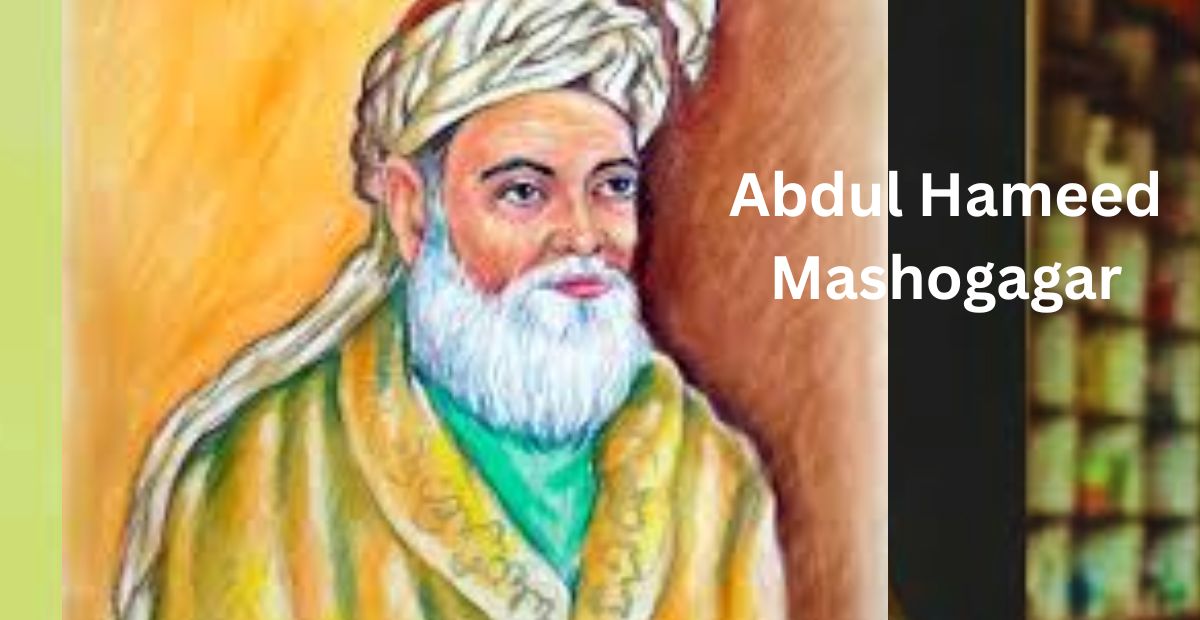Pashto: عبدالحميد ماشو ګګر
Died: Circa 1732
Known For: Pashto Sufi Poetry
Introduction
Abdul Hameed Mashogagar, more commonly known as Abdul Hameed Baba, was a prominent 17th–18th century Pashtun poet, Sufi mystic, and teacher. He is widely regarded as one of the classical figures of Pashto literature, known for his deep moral insights, spiritual themes, and a poetic style that emphasized the transient nature of worldly life. His legacy remains influential in both Afghan and Pashtun literary traditions.
Early Life and Education
Abdul Hameed was born in the second half of the 17th century, estimated between 1664 and 1724, in Mashogagar, a village near Badaber in the Peshawar region of present-day Pakistan. He belonged to the Kudrizi clan of the Mohmand tribe, part of the broader Afghan ethnic and tribal structure.
Hameed later traveled to the city of Peshawar for education, where he trained in religious studies and Sufi philosophy. He eventually became a respected religious teacher, attracting students from surrounding areas who sought his knowledge in theology, mysticism, and ethics.
Literary Work and Philosophy
Hameed Baba wrote exclusively in Pashto, contributing significantly to the classical literary corpus of the language. His poetry is known for its:
- Sufi themes, focusing on the soul’s relationship with the divine
- Moral and ethical lessons, often conveyed through allegory and metaphor
- Criticism of materialism and worldly attachments
- Tone of spiritual cynicism, emphasizing the futility of chasing worldly success
He was deeply influenced by Sufism, and like many Muslim poets of his time, his verses reflected mystical Islamic teachings that explored the inner journey of the soul, divine love, and the impermanence of the material world.
Style and Reputation
Abdul Hameed Baba’s style was concise yet profound, earning him the Persian nickname “Hameed the Hair-splitter” for his sharp intellect and poetic precision. His contemporaries and later scholars admired him for his ability to convey complex Sufi thought in accessible language.
Comparison with Saadi
The British orientalist and linguist Henry George Raverty described him as “Afghanistan’s cynical poet” and favorably compared him to Saadi of Persia, calling him “the Saadi of the Pashto language.” This comparison reflects Hameed’s philosophical depth and ethical instruction akin to the great Persian poets.
Major Works
Several of Abdul Hameed’s works have been translated into English and other languages, broadening his reach beyond Pashto-speaking communities. His most well-known poetic compilations include:
- Love’s Fascination
- The King and the Beggar
- Pearls and Corals
These works continue to be studied for their rich spiritual content and their contribution to classical South Asian literature.
Death and Legacy
Abdul Hameed Baba is believed to have died around 1732, in his home village of Mashogagar, where he spent most of his life. His grave, although neglected in modern times, is still known locally and visited by admirers of his work.
Influence
His poetry was not only popular across Pashtun regions but also found an audience in Persia, illustrating his cross-cultural influence in the Islamic world. His teachings and literary legacy continue to be celebrated in literary circles, especially among scholars of Sufism and Pashto literature.
Conclusion
Abdul Hameed Mashogagar stands as a towering figure in Pashto literary history. His blend of mysticism, moral reflection, and poetic elegance places him among the great Sufi poets of the Islamic tradition. Despite the passage of centuries, his work remains a source of spiritual insight and cultural pride for Pashtuns and admirers of Sufi literature alike.
References
- Raverty, H. G. (1862). Selections from the Poetry of the Afghans. London: Williams & Norgate.
- Riaz Ahmad. “18th Century Sufi Poet’s Grave in Ruins.” The Express Tribune.
- Dawatan.com (2006). “Abdul Hameed Baba.” [Archived source]
- Raverty, H. G. Selections from the Poetry of the Afghans, p. 85–86.
